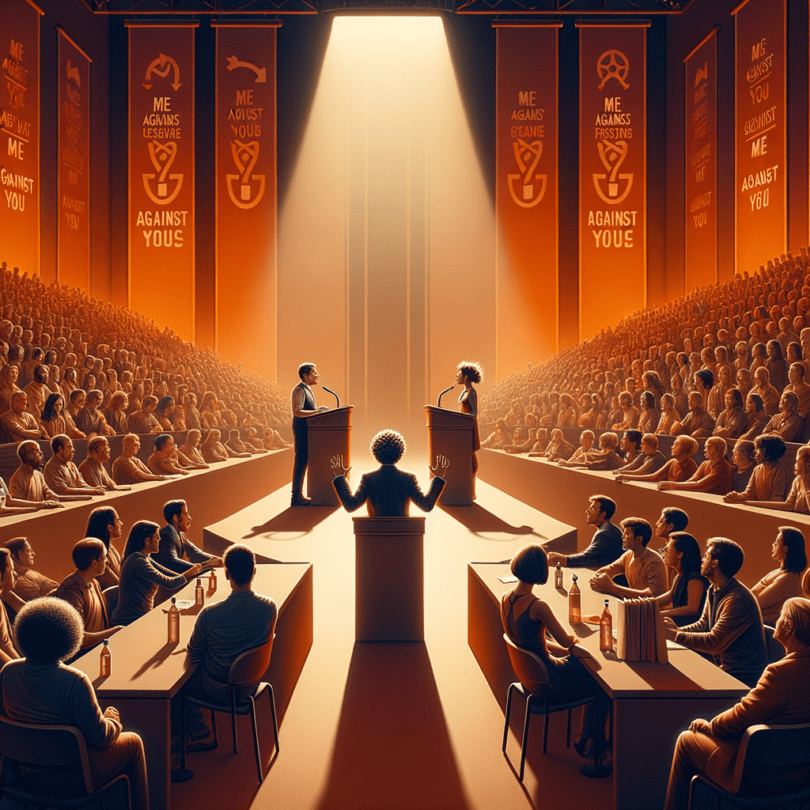The ongoing culture wars respond to perceived new threats, although they’ve existed for eons, constantly evolving in style. In Australia, fierce debates erupt over gender, sexuality, race, religious freedom in schools, climate change, and the right to protest. Recently, the Cumberland Council in western Sydney attempted to ban books about same-sex parenting from eight libraries, but this decision was reversed in a late-night meeting as police monitored opposing protests outside. During the COVID pandemic, conspiracy theories became more widespread, aided by social media, although the roots of such thinking existed long before, and these platforms merely accelerated the process. We face the fallout from longstanding toxic trends, exacerbated by our tendency to oversimplify everything into binary oppositions. This might be a way to distract ourselves from confronting the worsening global issues like climate disasters, humanitarian crises, the growing wealth divide, and housing costs.
In 2024, populist and authoritarian leaders worldwide have capitalized on conspiracy theories and misinformation. The rise of artificial intelligence facilitates the spread of these ideas. How did we end up here? Forks, Washington, known for its fictional link to the Twilight series, became a real-life hotspot on June 3, 2020, when a family on a themed vacation was mistaken for Antifa members and confronted by armed locals. This misidentification nearly led to violence, highlighting the role of polarized media in culture wars, as investigative journalist Jon Ronson discusses in his podcast “Things Fell Apart.”
Ronson notes that for many, ideology has overshadowed evidence. He supports activist journalism but stresses the importance of traditional journalistic principles like fairness. His podcast covers American divisiveness through topics like Qanon and COVID-related conspiracy theories, mirroring the U.S.-inspired culture wars now seen in Australia. The Albanese government tries to ease tensions, as demonstrated by Prime Minister Anthony Albanese’s opposition to divisive culture wars. Recently, NSW Arts Minister John Graham criticized councilor Steve Christou for copying U.S.-style culture wars in banning same-sex parenting books.
Ronson offers two definitions of culture wars: shouting matches on social media and struggles for value dominance. The term’s origins date back to 19th-century Europe during a conflict between Pope Pius IX and Prussia’s Otto von Bismarck, known as the “Kulturkampf” or “struggles of cultures.” The term gained modern recognition from sociologist James Davison Hunter’s 1991 book, “Culture Wars: The Struggle to Define America,” which describes cultural warfare as hostility rooted in competing moral principles.
In the late 20th century, culture wars in the U.S. and Australia revolved around issues like abortion, education, and gay rights. In 1992, Pat Buchanan framed America’s culture war in terms similar to Australia’s, with political leaders like John Howard declaring victory over political correctness and multicultural debates.
Ronson explores the cultural shift in America during the 70s and 80s, marked by changing control over education, media, and entertainment. He links the rise of conspiracy theories, such as those seen in the Satanic Panic of the 80s, to figures like Bob Larson, a radio host who stirred fear of Satanic influences. This pattern continues today with conspiracy theories like Pizzagate and QAnon, which evolved through social media.
In the backdrop of the 2020 pandemic, conspiracy theories coalesced across the internet, forming what Anna Merlan calls a “conspiracy singularity,” merging disparate ideas into a unified suspicion theory. Ronson’s podcast delves into events accelerating culture wars in 2020, questioning the notion that such conflicts are a relic of the past. Instead, we remain deeply divided, with cultural disputes more prevalent than ever.
The Black Lives Matter movement, sparked by the 2020 killing of George Floyd, is an example of culture wars driven by historical prejudices and misinformation, such as the “excited delirium” diagnosis used to justify police actions. Naomi Klein notes how society bifurcated, with opposing sides defining themselves in opposition to one another, especially evident in response to the World Economic Forum’s Great Reset initiative.
Ronson’s podcast episode on the Great Reset examines how conspiracies surrounding it gained traction, despite public transparency, highlighting how people, regardless of political orientation, process information and perceive conspiracies. This mindset, amplified by social media, facilitated the spread of works like Mikki Willis’s “Plandemic,” a conspiracy film linking COVID-19 with government control narratives.
Willis’s documentaries intertwine various conspiracy themes, reflecting on how cultural battles interconnect issues like the Great Reset and trans rights through Joseph Campbell’s “hero’s journey” narrative framework. This story model, appealing to conspiracy theorists for its simplicity, reinforces binary thinking, presenting the world as a battlefield of heroes versus villains.
The massive viewership of “Plandemic” can partly be explained by clickbait strategies and algorithms. It illustrates our inclination to simplify complex issues into binary narratives, providing comfort and a sense of control amidst escalating global crises. This mindset is hard to shake given the barrage of media-driven, curated realities we encounter daily, often limiting efforts to find common ground.
Ronson warns that spreading falsehoods is detrimental and urges us to cling to truth. Echoing philosopher Theodor Adorno, the recurring struggle within culture wars suggests a persistent human challenge in imagining a more harmonious world.

